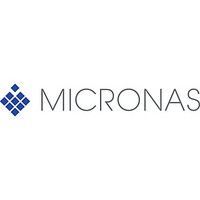CDC3205G-C Micronas, CDC3205G-C Datasheet - Page 172

CDC3205G-C
Manufacturer Part Number
CDC3205G-C
Description
Automotive Controller Family The Device is a Microcontroller For Use in Automotive Applications.the On-chip Cpu is an Arm Processor ARM7TDMI with 32-bit Data And Address Bus, Which Supports Thumb format Instructions.
Manufacturer
Micronas
Datasheet
1.CDC3205G-C.pdf
(260 pages)
- Current page: 172 of 260
- Download datasheet (3Mb)
CDC 32xxG-C
27.1. Abbreviations
BI
BTL
CAN
CA
CO
CM
CRC
DLC
EoCA
Ext. ID
Ext. Tg
GCS
27.2. Functional Description
27.2.1. HW Description
The CAN bus interface consists of the following components:
Bit Timing Logic: Scans the bus and synchronizes the CAN
bus controller to the bus signal.
Protocol Manager: The PM monitors or generates the com-
position of a telegram and performs the arbitration, the CRC
and the bit stuffing. It controls the data flow between Rx/Tx
buffer and CAN bus. It also drives the Error Management
Logic.
Error Management Logic: Adds up the error messages
received from the protocol manager and generates error
messages when particular values are exceeded. Guarantees
the error limitation as per the CAN Spec. V2.0B.
Interface Management Logic: The IML scans the Commu-
nication Area (CA) in the CAN-RAM for transmit telegrams.
As soon as it finds one, it enters it into the Rx/Tx buffer and
reports it to the protocol manager as ready for transmission.
If a telegram is received, the IML carries out the acceptance
filtering, i.e. scans the CA, taking into account the Identifier
Mask Register in the GCS, for a Tg with the appropriate
address. After correct reception, it copies the Tg from the Rx/
Tx buffer to the CA. The IML also reports to the CPU the
valid transfer of a telegram or given errors per interrupt.
The interrupt source output of this module is routed to the
Interrupt Controller logic. But this does not necessarily select
it as input to the Interrupt Controller. Check section “Interrupt
Controller” for the actually selectable sources and how to
select them.
Rx/Tx buffer: This is used to buffer a full telegram (ID, DLC,
data) during sending and receiving.
Global Control and Status Register: The GCS contains
registers for the configuration of the BI. It also contains error
and status flags and an identifier mask. The Error Counter
and the Capture Timer can be read from the GCS.
170
CAN Bus Interface
Bit Timing Logic
Controller Area Network
Communication Area
Communication Object
Communication Mode
Cyclic Redundancy Code
Data Length Code
End of CA
Extended Identifier
Extended Telegram
Global Control and Status Register
June 12, 2003; 6251-579-1PD
ID
IML
Rx. Obj.
RxTg
Std. ID
Std. Tg
TD
Tg
TQ
Tx. Obj.
TxTg
Receive Object: The BI enters received telegrams into a
matching Rx-Object. It can be retrieved from the application.
Transmit Object: The application enters data into the Tx-
Object and reports it ready for transmission. The BI sends
the telegram as soon as the bus traffic allows.
For the effect of CPU clock modes on the operation of this
module refer to section “CPU and Clock System” (see
Table 4–1 on page 37).
27.2.2. Memory Map
From the CAN bus interface the user sees two storage areas
in the user RAM area. The BI is configured with the Global
Control and Status Registers (GCS). It also indicates the sta-
tus here. The communication area (CA) contains the Rx and
Tx telegrams.
The communication area lies in the CAN-RAM. The end of
the Com. Area is fixed by the first control byte of an object
whose 3 MSBs contain only ones (Communication Mode = 7
= EoCA). The area after this is available to the user.
The CA consists of communication objects (COs). A CO con-
sists of 6 bytes telegram descriptor (TD), 8 data bytes and
the Time Stamp which is 2 bytes long. The TD contains the
address (ID) and the length of a telegram (DLC) as well as
control bits which are needed for access to the CO and for
the transmission of a telegram.
In the BasicCAN and the FullCAN versions, all the communi-
cation objects have the same, maximum size of 16 byte.
Unassigned storage locations in the data area of a CO can
be freely used.
The maximum number of COs is limited by the time which
the CAN interface has to search for an identifier in the Com.
Area.
Identifier
Interface Management Logic
Receive Object
Receive Telegram
Standard Identifier
Standard Telegram
Telegram Descriptor
Telegram
Time Quantum
Transmit Object
Transmit Telegram
PRELIMINARY DATA SHEET
Micronas
Related parts for CDC3205G-C
Image
Part Number
Description
Manufacturer
Datasheet
Request
R

Part Number:
Description:
Scan rate converter using embedded DRAM technology unit
Manufacturer:
Micronas
Datasheet:

Part Number:
Description:
Video pixel decoder
Manufacturer:
Micronas
Datasheet:

Part Number:
Description:
Stereo audio DAC
Manufacturer:
Micronas
Datasheet:

Part Number:
Description:
Multistandard sound processor
Manufacturer:
Micronas
Datasheet:

Part Number:
Description:
VAD2150_Micronas.pdf
Manufacturer:
Micronas
Datasheet:

Part Number:
Description:
VPS/PDC- plus decoder
Manufacturer:
Micronas
Datasheet:

Part Number:
Description:
Teletext decoder with embedded 16-bit controller M2
Manufacturer:
Micronas
Datasheet:

Part Number:
Description:
High-end picture-in-picture ICs
Manufacturer:
Micronas
Datasheet:

Part Number:
Description:
Cost-effective picture-in-picture ICs
Manufacturer:
Micronas
Datasheet:

Part Number:
Description:
Cost-effective picture-in-picture ICs
Manufacturer:
Micronas
Datasheet:

Part Number:
Description:
Teletext Decoder with Embedded 16-bit Controller
Manufacturer:
Micronas
Datasheet:

Part Number:
Description:
Octal 8-Bit Trimmer, IC
Manufacturer:
Micronas
Datasheet:

Part Number:
Description:
Video Pixel Decoder
Manufacturer:
Micronas
Datasheet:










